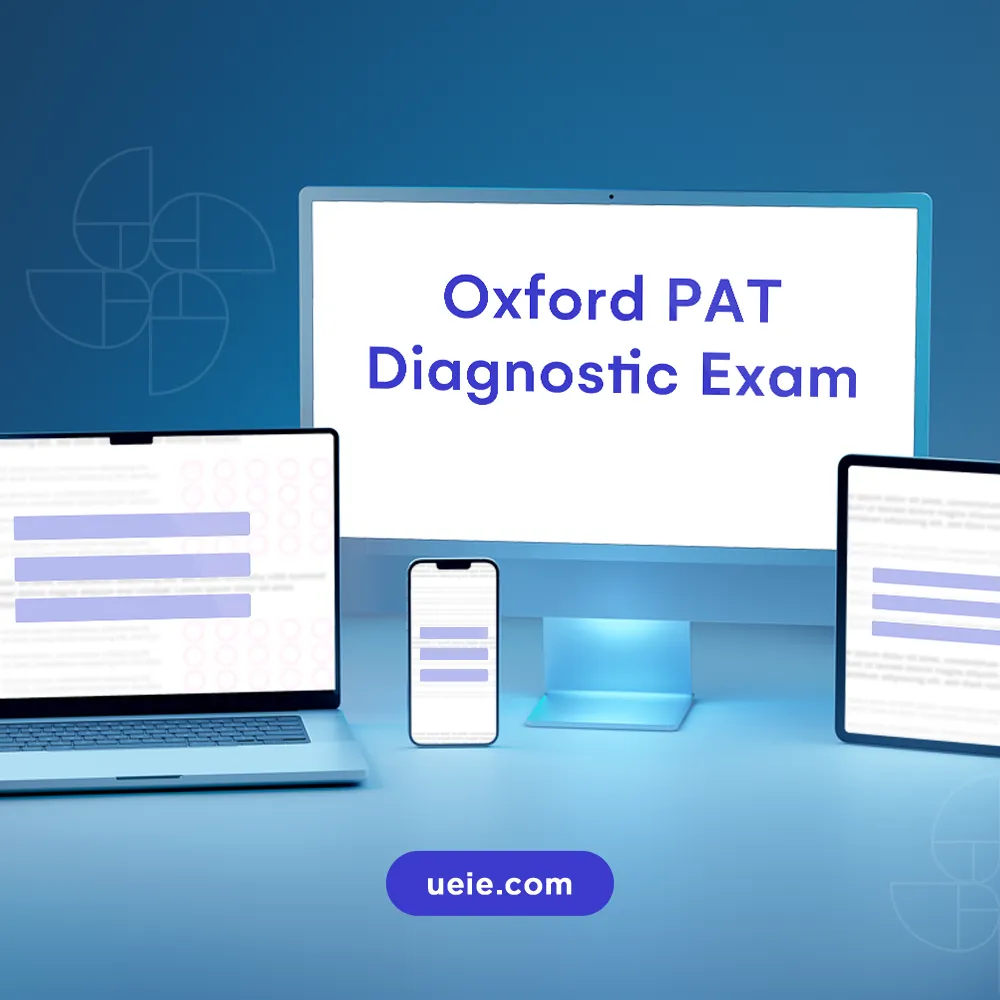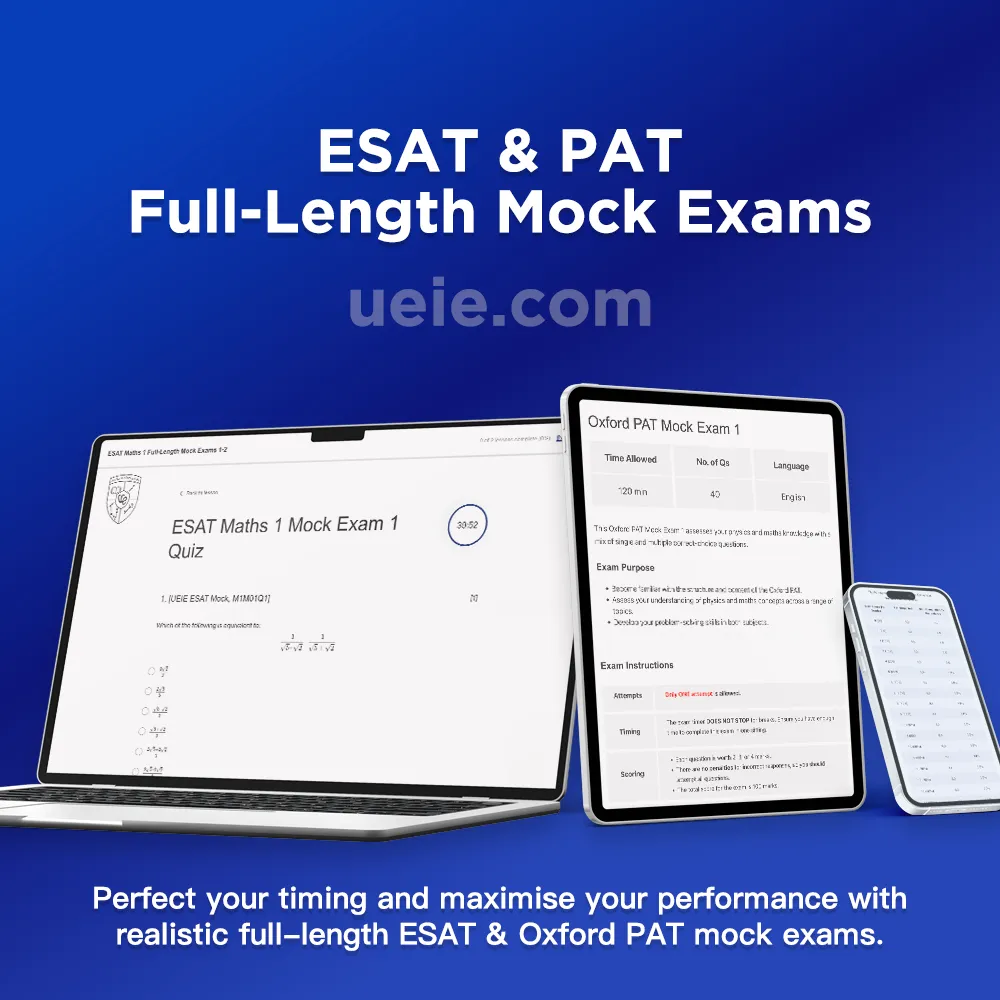
Independent Teacher

For students aspiring to apply for Physics, Engineering Science, or Materials Science at the University of Oxford, successfully navigating the Physics Aptitude Test (PAT) is a crucial step in the application process. With the PAT’s recent transition to a fully online, computer-based examination featuring solely multiple-choice questions, adapting to this new format and preparing efficiently has become a significant challenge for candidates.
I hope this Oxford PAT Preparation Guide, authored by me (Mr. Xie Tao) and based on many years of experience coaching students for Oxbridge admissions tests, will provide you with a systematic and practical set of preparation strategies and methods tailored to the latest examination format.
Before delving into this guide, I strongly recommend that you first carefully read Oxford PAT Comprehensive Guide to gain a full understanding of the latest developments, requirements, and marking criteria for the examination.
To embark on your Oxford PAT preparation journey, you must first clearly understand your ‘destination’ (target requirements) and your current ‘starting point’ (your own level). This is the prerequisite for formulating any effective preparation strategy.
You need to understand the role PAT scores play when applying for courses such as Physics, Engineering Science, or Materials Science at the University of Oxford. Although the University does not set an absolute ‘cut-off score,’ the PAT result is one of the key factors influencing shortlisting for interviews.
Before commencing systematic preparation, undertaking a Diagnostic Exam is crucial, especially to familiarise yourself with the latest online examination format. This will help you to:
Choosing a Test Tool
Prioritise using the latest online practice tests provided by the University of Oxford (available on the official PAT page or the Pearson VUE platform), as these most closely replicate the actual examination environment.
Alternatively, you can select high-quality online mock tests that simulate the latest format, such as the Free Oxford PAT Diagnostic Exam offered by UEIE. This test paper highly emulates the latest PAT paper format (including single-best-answer and multiple-answer questions) and difficulty level, designed to more effectively assess the core knowledge and skills required for the PAT. Click the link below for details and to take the Diagnostic Exam online.

Free Oxford PAT Diagnostic Exam
Note: When using past papers (from before 2024) for practice, be aware that their question types (including written sections and non-multiple-choice questions) differ from the current format. Their main value lies in testing knowledge point mastery rather than fully simulating the examination experience.
Simulating a Realistic Environment
Objective Evaluation and Analysis
Combining your target requirements and self-assessment results, you need to set scientific and reasonable preparation goals. It is advisable to follow the SMART principles:
Balancing Ambition with Realism
Goals should be challenging enough to stimulate your potential yet remain realistic. Understanding the composition of the R-score means that, in addition to the PAT itself, a good GCSE background is also beneficial. However, for most students, improving their PAT score is the aspect over which they have the most active control. Remember, the PAT score is only one part of a comprehensive assessment, but a competitive score will undoubtedly enhance your prospects.
Oxford PAT preparation, especially when adapting to the new format, can present difficulties and setbacks. It is crucial to cultivate a positive mindset:
Precisely grasping the knowledge requirements of the PAT is the first step in formulating an effective preparation strategy. You need to clearly understand what will be tested, what will not, and how to prepare based on your academic background.
The PAT syllabus is based on the UK’s A-Level curriculum but has its specific scope and emphasis:
Students following non-A-Level curricula, such as AP or IB, need to proactively compare and supplement their knowledge:
AP Curriculum Students
IB Curriculum Students
Core Recommendation
Regardless of your curriculum, the most authoritative standard is always the latest examination syllabus released by the PAT authorities. Be sure to download the syllabus, check it item by item, and develop a detailed knowledge supplementation plan to ensure all required content is covered.
Competition Advantage
In recent years, the difficulty and style of PAT questions have indeed shown a trend towards those found in physics competitions (such as the British Physics Olympiad, BPhO Round 1). Students with relevant competition experience may have an advantage in handling complex physical scenarios and employing multiple methods to solve problems, and their thinking tends to be more flexible.
Not a Prerequisite
However, it must be emphasised that a physics competition background is by no means a prerequisite for taking the PAT or achieving a good score. The core of the PAT remains the assessment of a profound understanding and application of the knowledge within the syllabus.
Coping Strategies
Mastering the knowledge required by the PAT syllabus is fundamental, but this alone is not sufficient to guarantee a high score. Especially with the transition to an online, purely multiple-choice format, you also need to hone the following key core competencies to stand out in the fierce competition.
This remains the core of what the PAT assesses. Regardless of how question types change, a deep understanding of fundamental physical concepts and laws is the cornerstone for solving complex problems. You need to:
A significant number of PAT questions require the application of A-Level mathematical knowledge to analyse and calculate physical problems. You need to possess:
This is one of the most critical skills under the new format. With 40 multiple-choice questions (including single-best-answer and multiple-answer questions) to be completed in 120 minutes, averaging only 3 minutes per question, mastering efficient strategies is essential:
Unlike in the past, you must now exclusively use the online calculator provided within the examination system. You need to:
Engaging in high-intensity mathematical and physical thinking whilst looking at a screen for an extended period tests concentration and stamina. You need to:
Clear strategies and the effective use of resources are key to efficient PAT test preparation. This requires a phased, focused process that is fully adapted to the new online multiple-choice format.
Objective
Systematically review the physics and mathematics knowledge points covered by the PAT syllabus, ensure there are no blind spots, achieve a profound understanding of core concepts, and reinforce the precision of basic calculations.
Actions and Resources

ESAT & PAT Video Lecture Series
US$276.21 – US$1 113.19
Objective
Undertake specialised training focused on the characteristics of PAT online multiple-choice questions to improve problem-solving speed, accuracy, application of multiple-choice strategies, efficiency in using the online calculator, and adaptability to the online environment.
Actions and Resources

ESAT & PAT Practice Question Bank
US$178.56 – US$694.70
Objective
Comprehensively simulate the real online examination environment, assess overall preparation levels, optimise examination strategies (time allocation, answering pace), identify and rectify weaknesses, and adjust to an optimal examination state.
Actions and Resources

ESAT & PAT Full-Length Mock Exams
US$69.47 – US$278.72

ESAT & PAT On-Demand Prep Suite
US$597.05 – US$2 368.68
‘How long does Oxford PAT preparation take?’ This is a question many students are concerned about. The scope of knowledge for the PAT is relatively concentrated, but its demands on physics thinking, mathematical application, and adaptation to the new online multiple-choice format also require ample time for preparation and refinement. Sensible planning is key to success.
The amount of preparation time you need primarily depends on the following factors:
The following are general recommendations based on common student backgrounds. Please note these are only references; consistent and effective effort is more important than sheer duration:
Students with a Solid Physics/Mathematics Foundation (with experience in mathematics or physics competitions):
A-Level Curriculum Students (without competition experience):
AP/IB Curriculum Students (without competition experience):
Core Tip
Starting early always offers an advantage, allowing for a more composed approach to each preparation phase. The key lies in consistency and learning efficiency.
For students currently in school, efficiently balancing Oxford PAT preparation with coursework is crucial:
Manifestation and Consequences
Underestimating the demands of the PAT on physics and mathematics abilities, particularly the time required to adapt to the online multiple-choice format, and only starting to prepare hastily close to the examination. This leads to an unstable foundation, insufficient practice, and an inability to adapt to the examination rhythm.
Countermeasure
Plan early, invest consistently! Recognise that Oxford PAT preparation (especially skill enhancement and adaptation to the new format) requires accumulated time. Refer to the recommendations in Section V, formulate a detailed, phased preparation plan, and ensure consistent, effective study input each week.
Manifestation and Consequences
Relying mainly on paper-based practice, lacking familiarity with the Pearson VUE online examination platform’s interface and operational methods (such as flagging, navigation), and the use of the online calculator (functionality, speed, precision); not being accustomed to prolonged screen reading and answering.
Countermeasure
Manifestation and Consequences
Treating multiple-choice questions as simple knowledge checks, lacking coping techniques; being prone to errors when facing distractors; not differentiating strategies for single-best-answer and multiple-answer questions; poor time allocation, spending too much time on difficult questions or working too slowly (far exceeding the average of 3 minutes per question).
Countermeasure
Manifestation and Consequences
Having a superficial understanding of basic concepts and formulae within the syllabus, relying on rote memorisation; being unable to flexibly apply knowledge to question scenarios, and struggling to find a solution path even for multiple-choice questions.
Countermeasure
Manifestation and Consequences
Feeling excessively anxious about the difficulty, time constraints, or online format of the PAT; being prone to mental breakdown and self-doubt when encountering setbacks (such as unsatisfactory mock exam results or inability to solve difficult problems), affecting the continuity of preparation.
Countermeasure
Manifestation and Consequences
Relying on outdated or unsuitable preparation materials for the new format (e.g., only using old paper-based past papers); not paying attention to the latest information released by official sources (such as syllabus updates, sample questions, online test updates); blindly collecting numerous resources without knowing how to use them effectively, leading to dispersed energy.
Countermeasure
By now, you should have a systematic understanding of how to prepare for the PAT test in its new format. As I conclude this guide, allow me to re-emphasise the importance of mindset and outline the key actions for you to take next.
The Oxford PAT preparation journey is inevitably filled with challenges. A strong psychological constitution is a key guarantee for reaching your goal. Please be sure to cultivate the following mindsets:
Having clarified your mindset and methods, the next crucial step is to translate cognition into tangible action. I recommend that you:
Finally, please believe in yourself. Thorough preparation and a positive mindset will be your most powerful weapons in tackling the PAT challenge. I wish you success in conquering the PAT through your wisdom and hard work, and in entering the academic institution of your dreams!
